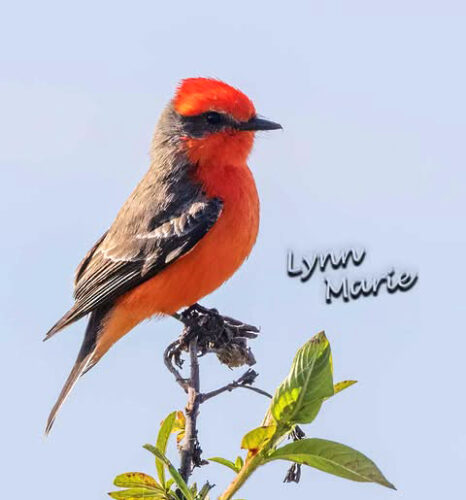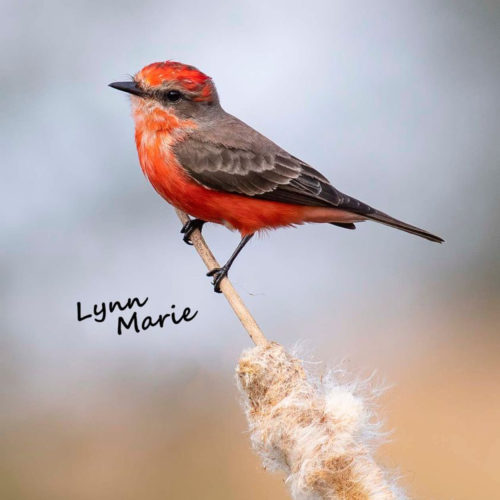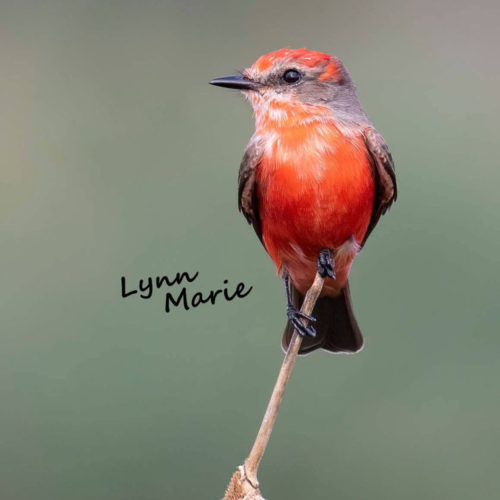The Vermilion Flycatcher’s genus name, Pyrocephalus rubinus, means “fire-headed.” The brilliant male pictured here is an uncommon visitor to Florida. Females are grayish brown with a yellowish-red underside.
Vermilion Flycatchers are year-round residents in Central and South America. However, they are known as wanderers and have traveled to British Columbia. Some spend their winter along Florida’s Gulf coast.
These small, but striking birds, prefer open habitats with a water source where they perch on low branches, shrubs, and fences. They fly swiftly to catch their prey and loop back to their perch. Food consists of insects, including bees, crickets, and beetles. Larger insects, such as butterflies or grasshoppers, are slammed against the perch to make them suitable for eating.
Although scarce in Florida, Vermilion Flycatchers are common in most of their range and, thus, are a species of low-level concern.



